March 2024
- PREVIOUS
- NEXT
- English
- 日本語
Japanese Bridges — Continuously Evolving Since the Time of Modernization
-
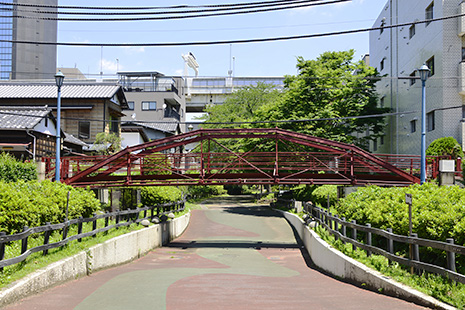
The Hachiman Bridge built in 1878 (Koto City, Tokyo) -

Built in 1940, the Kachidoki Bridge is one of the few double-leafed drawbridges in Japan. (Chuo City, Tokyo) Photo: Yamada Kentaro
-
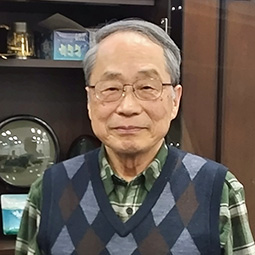
Yamada Kentaro
Having served as professor at the Nagoya University School of Engineering and the Graduate School of Engineering/Graduate School of Environmental Studies, currently serves as Professor Emeritus at the same university. Also a senior researcher at the Nagoya Industrial Science Research Institute and an advisor to Central Nippon Highway Engineering Nagoya Co., Ltd. -
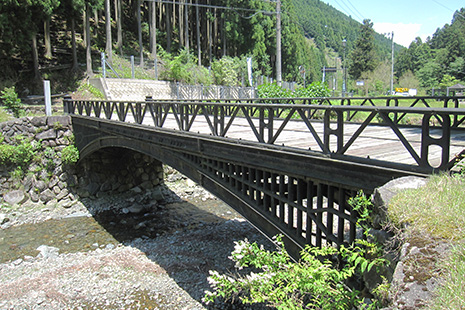
The Mikohata Bridge built in 1885 (Asago City, Hyogo Prefecture) Photo: Yamada Kentaro -
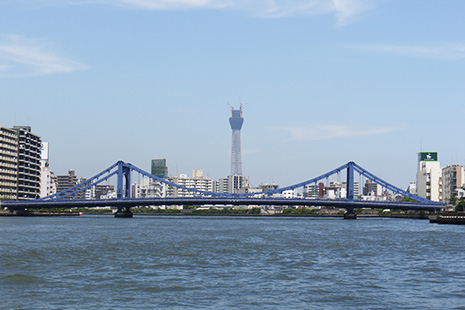
The Kiyosu Bridge built in 1928 (Chuo City and Koto City, Tokyo) Photo: Yamada Kentaro -

The Miyoshi Bridge, raised during the Sunari Festival Photo: Kanie Town Museum of History and Ethnography -
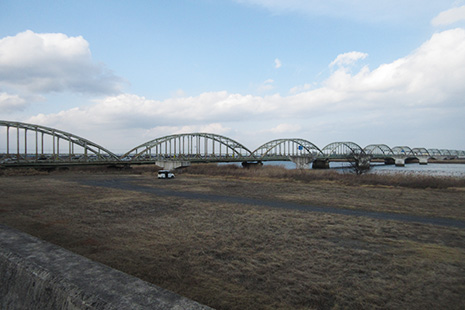
The Ise Bridge, built on National Route 1 (Kuwana City, Mie Prefecture) Photo: Yamada Kentaro

As Japan’s modernization progressed from the mid-to-late 19th century, the country adopted Western bridge* construction techniques. Today, Japan boasts some the most advanced bridge-building technologies in the world. We interviewed Yamada Kentaro, Professor Emeritus at Nagoya University, about the historical background leading to today, the process of technological innovation, and examples of famous bridges.

Having served as professor at the Nagoya University School of Engineering and the Graduate School of Engineering/Graduate School of Environmental Studies, currently serves as Professor Emeritus at the same university. Also a senior researcher at the Nagoya Industrial Science Research Institute and an advisor to Central Nippon Highway Engineering Nagoya Co., Ltd.
As modernization progressed, Japan began to adopt Western technology for building bridges in the late 19th century. How have Japanese bridges changed after these developments, compared to what they were before?
In Japan, a country with many swift-flowing rivers and areas of poor ground conditions, most bridges were once simple structures made of readily available materials such as wood and stone. These bridges would easily collapse in the event of a disaster. However, as diplomacy flourished in the second half of the 19th century, people traveling on fact-finding missions in Europe and the United States saw modern bridges built primarily of iron after the Industrial Revolution. And because of it, Western technology was brought to Japan, leading to an epoch of bridge construction that used imported cast iron and wrought iron.** Many famous bridges still standing today date from this period, such as the Hachiman Bridge in Koto City, Tokyo, and the Mikohata Bridge in Asago City, Hyogo Prefecture.

Later, after the state-run Yawata Steel Works began operations in 1901 in Kitakyushu City, Fukuoka Prefecture, steelmaking flourished domestically in Japan and steel was increasingly used in infrastructure facilities. The construction of iron (or steel) bridges also gradually took off. The term “steel bridge” refers to bridges whose main supporting components are made of steel. One particular event that triggered the construction of many steel bridges was the Great Kanto Earthquake of 1923. By this earthquake, a large number of wooden bridges in the Tokyo area were destroyed or burned to the ground. So as part of the reconstruction effort, many of these new metal bridges were built. it was during this time that many of the bridges over the Sumida River, which runs through the eastern part of Tokyo, were built, including the Kiyosu Bridge, the Eitai Bridge, the Kachidoki Bridge, the Senju Bridge, and the Shirahige Bridge, all of which are still standing today.

In the period around the beginning of World War II (1939), large bridges were built using exclusively domestic materials and technology, partly due to the increase in nationalism. At that time, students who studied design overseas under European and American educational systems returned to Japan and became involved in bridge construction. This was also a time of dramatic technological advances. For example, the foundation techniques used for the Brooklyn Bridge in New York were applied to bridge construction in Japan, where the soil was often weak. Many outstanding bridges built during this period are still in use today, such as the Nagahama Bridge (Ozu City, Ehime Prefecture), built in 1935, and the aforementioned Kachidoki Bridge.

After World War II, as Japan entered a period of rapid economic growth, welding technology advanced along with the development of the steel and shipbuilding industries, and welding was adopted for steel bridge joints, replacing the riveted joints that had been used until then. Welding made bridge structures capable of withstanding heavier passing traffic than before. The launch of the Tokaido Shinkansen (bullet train) in 1964, by the way, can be attributed to this welding technology.
Today, Japan has world-class technology for bridge construction. Can you tell us why the technology have come so far?
Preparedness for natural disasters such as earthquakes and typhoons is a uniquely important issue for public buildings in Japan, where such events occur frequently. As a result, research and development of natural disaster mitigation measures for bridge construction flourished, and companies generously invested in research for material development and strength verification. Research conducted with an eye on the next 30 to 50 years produced remarkable technologies that have made Japan a world leader in this field.
Also, once Japan entered the period of rapid economic growth, technology improved along with the development of road infrastructure. Expressways were constructed throughout the country, and large bridges were built to connect road networks. A representative example is the construction of the Honshu-Shikoku Bridges.*** Launched as part of a national project to connect the Japanese archipelago with bridges and tunnels, their construction had a tremendous impact on the bridge industry in Japan, leading to technological advances in many fields.
Japan also excels in new types of bridge structures and rehabilitation technologies for aging bridges, such areas in which it is attracting global attention. The needs to address vibration and design issues while making structures lighter and stronger, as well as the history of challenging natural disasters, have led to innovations in Japanese bridge projects.
In your opinion, what are some of the bridges that best represent the trends in bridge construction since the modernization of Japan?
The bridges on the Sumida River, which I mentioned earlier, represent disaster recovery efforts after the Great Kanto Earthquake and can also be explored from a boat. The Five Bridges of Amakusa in Kumamoto Prefecture, Kyushu, a route which was selected among the 100 Best Roads in Japan, form a beautiful landscape of bridges with distinctive structures stretching along scenic islands.
There are many modern steel bridges that I find beautiful. The aforementioned Kachidoki Bridge, one of the few drawbridges**** in Japan, and the Akashi Kaikyo Bridge, which is part of the Kobe-Naruto route of the three-route Honshu-Shikoku Bridges, are also impressive. Both bridges are worth seeing as construction projects that overcame technical difficulties.
Recently, bridges have become a tourist attraction, with guides offering bridge-crossing tours in various locations in Japan. Do you have any bridges that you would recommend overseas visitors to see or cross?
For visitors who wish to enjoy scenery and experiences, I recommend the Onomichi Imabari Route of the Honshu-Shikoku Bridges, commonly known as the Setouchi Shimanami Kaido.***** Touring this route offers some unique experiences, such as crossing bridges on a rental bicycle while enjoying the beautiful scenery of the Seto Inland Sea. In addition, three bridges on the Ise Bay Expressway in Aichi Prefecture — the Meiko Nishi Ohashi Roadway Bridges, the Meiko Chuo Bridge, and the Meiko Higashi Bridge — known collectively as the Meiko Triton, are each extremely beautiful, must-see cable-stayed bridges****** over the sea. There is also a rare drawbridge called the Miyoshi Bridge in Kanie City, Aichi Prefecture, which is only raised during the Sunari Festival, an event designated as a UNESCO Intangible Cultural Heritage in 2016, when makiwara-bune (a festival boat decorated with illuminated lanterns) and danjiri-bune (a festival boat decorated with dolls) pass under it.

How do you think bridge construction projects in Japan will develop in the future?
I believe that bridge construction in Japan has reached a turning point, in two ways. The first is that public works projects are now placing more emphasis than before on environmental protection and landscape-oriented design that takes the surrounding environment into consideration. As public structures, the values driving bridge design will change, placing even greater importance on continuity and consistency with the surroundings. The other is that the bridges built in the past are aging, and maintenance and management are becoming more important than ever. I believe that a major issue in bridge construction projects going forward will be how to pass on to future generations the famous bridges of historical value including the technology developed in our own country, such as the Ise Bridge, designed by Japan’s leading bridge engineer Masuda Jun******* and built in 1934.

* Structures erected over rivers, ravines, canals, etc., to facilitate traffic
** Iron-making methods that predate the invention of the converter furnace, which could produce steel on a mass scale. Cast iron was made by pouring molten pig iron into molds. Wrought iron was made by rolling pig iron into iron bars called puddles.
*** A collective name for the bridges connecting the Japanese islands of Honshu and Shikoku across the Seto Inland Sea. There are three routes: Kobe-Naruto, Kojima-Sakaide, and Onomichi-Imabari.
**** A type of bridge in which part of the structure can be raised to allow ships to pass underneath.
***** See “Cycling Over the Sea: The Setouchi Shimanami Kaido,” Highlighting Japan (gov-online.go.jp).
****** A bridge structure in which the bridge girders are directly supported by cables stretched diagonally from towers high above the girders.
******* Born 1883 in Kagawa Prefecture and died in 1947. Traveled to the US in 1908 to study Western bridge technology and then returned to Japan, where he worked in the field of bridge construction, including bridge design and construction supervision. Masuda was a remarkable bridge engineer who was involved in the construction of 80 major bridges in Japan and overseas, including the Shirahige Bridge and the Ise Bridge.
- PREVIOUS
- NEXT

